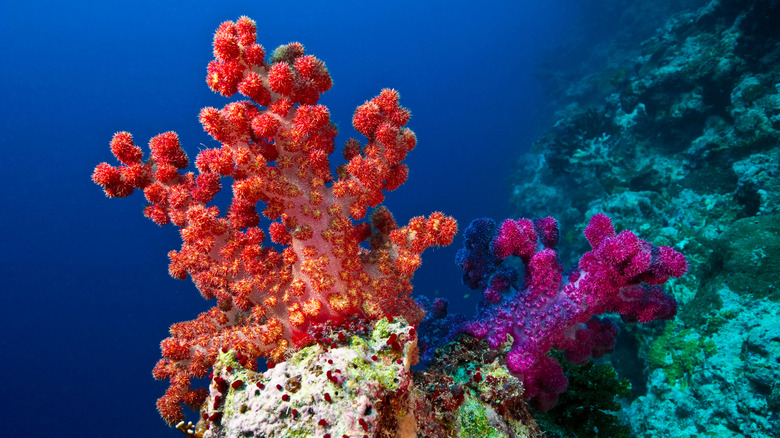Plants In A Coral Reef
Coral reefs are vibrant ecosystems found in tropical salt waters of the world. In addition to fish, crustaceans, and other marine animals, coral reefs provide a habitat for certain aquatic plants. Learning about coral reef facts such as these can help aid in the conservation of this marine ecosystem.
Coral reef definition
A coral reef is a dynamic, diverse ecosystem with coral as the foundational organism. Corals possess branching, skeletal forms that give structure for other organisms to live on, among, or even inside.
Are corals plants?
A coral is not a plant, but rather a combination of coral animals living in symbiosis with algae. Corals are tiny animals that live as polyps.
Coral polyps float in seawater until they latch onto a substrate. Then they take dissolved calcium from ocean water and convert it to a calcium carbonate skeleton. This skeleton serves as protection for the coral polyps.
There are, however, coral reef plants in this unique ecosystem that live near coral or even help protect it.
Coral reef plants: zooxanthellae algae
The algae that form a symbiotic relationship with coral polyps are zooxanthellae. Algae require a place to live, and they live inside coral. Since these algae need sunlight for photosynthesis, they live in the clear water of a coral reef that allows sunlight to penetrate the depths.
Zooxanthellae in turn provide food (amino acids and glucose) and oxygen for coral. They benefit from carbon dioxide generated via respiration from the coral. Zooxanthellae also give the semi-transparent coral its color. This is why there are so many colorful varieties of coral.
When temperatures are too high for coral, these algae are released from them, leading to a condition called "bleaching" which can kill the coral. Zooxanthellae are thought to have evolved approximately 160 million years ago, some 60 million years before the symbiosis with coral began. There are thousands of zooxanthellae species.
Coral reef plants: mangroves
Mangroves represent some of the plants in the ocean that are associated with coral reefs. Mangroves are plants with buttressed roots that grow in tropical areas. They can be found near coral reefs.
Researchers have found that while some reefs have perished due to bleaching from heat, corals that live in the shade of mangroves have a better chance for survival and even thrive. Protecting mangroves might help protect coral reefs from climate change.
Coral reef plants: seagrasses
One of the plants in the ocean that can be found in a coral reef is seagrass. Seagrasses are true, flowering, vascular plants, monocots similar to other grasses and palms. Seagrasses use photosynthesis to convert the sun's energy to food, just like plants on land. Because of this, they are usually found in shallow waters, such as coral reefs.
Seagrasses possess root systems that absorb and store nutrients from seafloor sediment. Their roots also keep them anchored despite the movement of seawater.
Seagrasses work as major oxygen producers for coral reef ecosystems, and they absorb runoff from land. Seagrasses also provide shelter for animals in a coral reef. Decaying seagrasses add to the nutrient content of a coral reef. They also absorb significant amounts of atmospheric carbon.
Coral reef facts
There are a number of interesting coral reef facts. Coral reefs are found only in tropical oceans, and they need clear water to survive. Coral reefs also need warm seawater between 68 and 82 degrees Fahrenheit to thrive. The three kinds of reefs include fringing reefs, barrier reefs, and atolls.
Not all corals are hard. There are "soft" corals or octocorals such as sea whips and sea fans that resemble plants. Black corals do not require zooxanthellae to survive.
The importance of coral reefs
Additional coral reef facts underscore the importance of coral reefs to life on earth. Coral reefs house approximately 25% of marine life on earth. In addition to coral reef plants, reefs provide food and shelter for numerous animals such as fish, lobster, shrimp, octopus, sea stars, rays, snails, worms, and sea urchins, among other animals.
Coral reefs protect coastal areas from waves and flooding caused by storms and tsunamis. They provide biodiversity, food, and tourism opportunities. Coral reefs also work to remove and recycle carbon dioxide. They are also a source of new medicines.
Understanding how the plants of a coral reef fit in the ecosystem will help scientists learn what needs to be done to protect coral reefs from climate change and human development.
